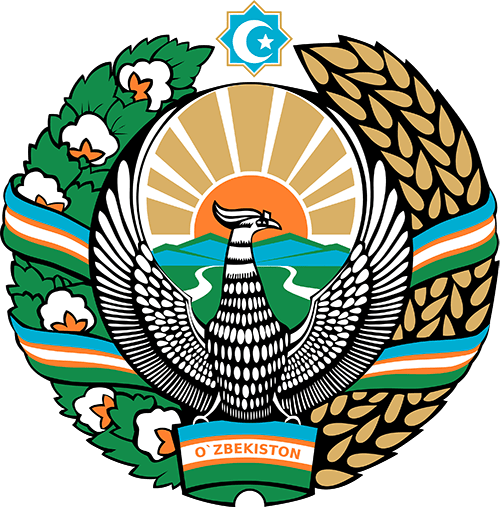СОВРЕМЕННАЯ МЕДИЦИНСКАЯ СОРТИРОВКА ЗА РУБЕЖОМ
Хамзаев К.А., Ташкентский педиатрический медицинский институт
Шарипов А.М., Ташкентский педиатрический медицинский институт
Резюме
Научно-технический прогресс, развитие медицины, потребности в экстренной медицинской помощи создали основу на необходимость медицинской системы сортировки обратившихся за помощью больных. Сортировка в современных системах экстренной медицинской помощи используется во время катастроф, при чрезвычайных ситуациях и приемных отделениях больниц для сортировки больных в зависимости тяжести заболевания и вида необходимой помощи. Это подчеркивает необходимость внедрения системы оценки и сортировки больных в работу приемных отделений больниц. Система сортировки и оценки предназначена для того, чтобы позволить сотрудникам службы экстренной медицинской помощи принимать обоснованные решения о состоянии больного и сократить смертность среди пациентов. Авторами изучено современная система медицинской сортировки, существующие за рубежом с целью внедрения в практическую медицину
Ключевые слова: экстренная медицинская помощь, медицинская сортировка, Австралийская шкала сортировки, индекс тяжести неотложного состояния, Манчестерская шкала сортировки, Канадская шкала сортировки и экстренности.
Первая страница
27
Последняя страница
34
Для цитирования
Хамзаев К.А., Шарипов А.М., Современная медицинская сортировка за рубежом // Евразийский вестник педиатрии. — 2019; 1 (1):27-34 https://cutt.ly/4x4z4wh
Литература
1. Woolwich, C. 2000. Accident and emergency: theory into practice. London: Tindall. P 476.
2. Howell, E. 1988. Foundation for trauma nursing: comprehensive trauma nursing: theory and practice. Glenview, III.: Scott & Foresman
3. Nestor, P. 2003. Triage history. [Online]. Available: journal of Emergency Primary Health Care, 1. P. 3-4.
4. Qureshi, K & Veenema, TG. 2003. Disaster triage and chemical decontamination: disaster nursing and emergency preparedness for chemical, biological, and radiological terrorism and other hazards. New York: Springer.Р:153
5. Ross, SE, Morgan, T & Schwab, Cw. 1988. The emergent phase, in Comprehensive trauma nursing: theory and practice, edited by E Howell, L Wildra & M Gail Hill. Glenview, III.: Scott & Foresman: Р. 367-377.
6. Сaroline, NL. 1995. Emergency care in the streets. 5th edition. Philadelphia, Pa: Lippincott. Р.438
7. Hall, JB, Schmidt, GA & Wood, LDH. 1999. Principles of critical care. 2nd edition. St Louis, Mo.: McGraw-Hill. Р.931.
8. Jones, c. 1993. Triage decisions: how are they made? Emergency Nurse 1 (1): P. 13-14.
9. Derlet RW, Kinser D, Ray L, et al: Prospective identification and triage of nonemergency patients out of an emergency department: a 5-year study. Ann Emerg Med 1995;25:215-223
10. FitzGerald GJ. Emergency department triage: Thesis for Doctor of Medicine, University of Queensland, 1989.
11. Beveridge RC, Ducharme J: Emergency department triage and acuity: development of a national model (Canada) (abstract). Acad Emerg Med 1997;4:475-476.
12. Mackway-Jones K. Emergency Triage. 2 ed. London: Manchester Triage Group; 2005.
13. SAEM Ethics Committee: Ethics of emergency department triage. Acad Emerg Med 1995;2:990-995.
14. De Vries,S, Gottschalk, SB, WalliS, LA & Wood, D. 2005. The Cape triage score. Nursing Update 29 (7): 38-43.
15. Cape Triage Group. 2005. Cape triage score: hospital provider manual. Cape Town: joint Emergency Medicine Division — University of Cape Town & University of Stellenbosch.
16. Worster A, Fernandes CM, Eva K, Upadhye S. Predictive validity comparison of two five-level triage acuity scales. European Journal of Emergency Medicine. 2007;14:188-192.
17. Gilboy N, Schoenaker E, Ramaker Y, Huysinga H. Implementation of triage on a emergency department in Amsterdam (Implementatie van triage op een Amsterdamse SEH). Triage. 2003;5:16-22.
18. Emergency Triage by the Manchester Triage Group, publisher BMJ Publishing Group, 1997.
19. Baumann MR, Strout TD. Triage of geriatric patients in the emergency department: validity and survival with the Emergency Severity Index. Annals of Emergency Medicine. 2007;49:234-240.
20. Tanabe P, Gimbel R, Yarnold PR, Kyriacou DN, Adams JG. Reliability and validity of scores on the Emergency Severity Index version 3. Academic Emergency Medicine. 2004;11:59-65.
21. Wuerz RC, Milne LW, Eitel DR, Travers D, Gilboy N. Reliability and validity of a new five-level triage instrument. Academic Emergency Medicine. 2000;7:236-242.
22. Wuerz RC, Travers D, Gilboy N, Eitel DR, Rosenau A, Yazhari R. Implementation and refinement of the emergency severity index. Academic Emergency Medicine. 2001;8:170-176.
23. Australasian College for Emergency Medicine. Policy Document: The Australasian Triage Scale; 2000.
24. Roukema J, Steyerberg EW, van Meurs A, Ruige M, van der Lei J, Moll HA. Validity of the Manchester Triage System in paediatric emergency care. Emergency Medicine Journal. 2006; 23:906-910.
25. Wuerz RC, Milne LW, Eitel DR, Travers D, Gilboy N. Reliability and validity of a new five-level triage instrument. Academic Emergency Medicine. 2000; 7:236-242.
26. Tanabe P, Gimbel R, Yarnold PR, Kyriacou DN, Adams JG. Reliability and validity of scores on The Emergency Severity Index version 3. Academic Emergency Medicine. 2004; 11: 59-65.
Статья доступна ниже



